Bonaire’s Natural History
Bonaire’s natural history is made up of oceanic volcanic activity and karst. Geologically speaking, Bonaire is a very young island, breaching the ocean’s surface “only” about 30 million years ago. This is approximately 45 million years after the large mass extinction that wiped out the dinosaurs struck. For the first 100 million years or so, Bonaire existed only as an irregular growing elevation on the ocean floor caused by volcanic activity. When this underwater mountain reached shallower depths, accessible to sunlight, coral reefs formed on top and around it. After a few million years of continuous oceanic volcanic activity, the underwater mountain breached the surface and the top of it became an island, exposing the dead corals to eroding elements like wind and rain. Over a few more million years as an island, erosion finally exposed its volcanic core as well and, combined with other forces including an ever-changing sea level, the so-called limestone terraces were formed around the volcanic core. Limestone is a form of karst (rock that dissolves in water, creating caves, ridges, crevices and fissures). Today, karst formations cover about 58% of the Bonaire’s surface area.

Today, karst formations cover about 58% of the Bonaire’s surface area.
Separated from direct contact with the sea and periodically flooded with fresh rain water, this karstic island rich in calcium carbonate was ready to sustain terrestrial life. Therefore, a terrestrial island ecosystem started to form at the same time that sinkholes, caves, crevices and other karst features were being shaped into the rock. As a result of the numerous sea-level changes in the last 100.000 years, many caves are located above sea level while others are found underwater, at depths up to 30m.
With plenty terrestrial life on the nearby continent and older islands, Bonaire’s ecosystem was formed by species of flora and fauna that managed to reach the island in a natural way. Wind-dispersed plant seeds, floating plants loaded with small invertebrates, and flying vertebrates like birds and bats, who also transported plant seeds in their gut, started to colonize this newly available piece of land. Not every species that managed to arrive succeeded to establish itself and flourished, but some did, and did quite well. Given the lack of permanent rivers and lakes, caves and other karst features providing access to fresh water had a lot to do with the success for many species of both flora and fauna. Particularly in the case of bats, these caves were key on their survival and establishment of permanent populations. From all the established bat populations, two species of nectar-feeding bats, Miller's Long- tongued Bat (Glossophaga longirostris) and the Curaçaoan Long-nosed Bat (Leptonycteris curasoae), became vital for sustaining life in the arid ecosystem of Bonaire as the main pollinators and/or seed dispersal agents of several species of columnar cacti. Columnar cacti not only support nectar-feeding bats in these ecosystems, but they also provide food and water to a broad range of vertebrates and invertebrates, including many species of birds and reptiles. This ecological interaction between bats and cacti started about seven million years ago.
It is only 3000 years ago that the first humans arrived on Bonaire. The archaeological record indicates that they mostly lived from the sea and that caves were important for their establishment. Indian inscriptions found on several caves of Bonaire testify to that and they are an important portion of the island’s cultural heritage. These humans did not alter the ecosystem much, yet they brought new animals and plants from the continent. However, when Europeans arrived about 500 years ago, the introduction of exotic invasive large domestic animals and plants was initiated. This practice continues today with detrimental consequences to the native habitat of the island.
Karst and caves flora
The vegetation found on Bonaire’s limestone terraces is composed of plants with special adaptations to harsh conditions like a lack of soil, limited water supply and very high temperatures. On the windward side of the island, the salty spray adds significantly to this harshness, reducing the number of species capable of surviving. Yet, thousands of years of vegetation growth and adaptations on the limestone terraces protected from the salty spray, resulted on a quite dense dry thorny forest, able to sustain many species of vertebrates and invertebrates including spiders, insects, reptiles, birds, bats and small rodents. On this dry forest is typical to find several species of “dry evergreen” species, of tress like Poisonwood (Metopium browneii), Swartz’s pigeon-plum (Coccoloba swartzii), and Lignum vitae (Guiacum officinale). The vegetation is often mosaic-like, with areas of forest alternating with areas of low shrubs like wild sage (Croton flavens). Candle cacti and deciduous species of plants and trees like Brasilwood (Haematoxylon brasiletto) are also common on these limestone terraces. Caves and crevices provide a source of permanent fresh water to those trees that grow their root systems through the limestone and into their cavities. Usually, these trees are found inside and near sinkholes, standing out from the vegetation surrounding them with their larger size and lusher canopies.
As a result of human activity which includes unsustainable harvest, land clearing and introduction of exotic species of large herbivores (goats, pigs and donkeys), deterioration of this dry forest has been excessive and a secondary impoverished plant cover dominated by thickets of prickly pear (Opuntia spp.) has developed, together with woody thorny species like Cossie (Vachelia tortuosa) and Mesquite (Prosopis juliflora).
Karst and caves fauna
The dry thorny forests on Bonaire’s limestone terraces are crucial to sustain the terrestrial reptile and bird fauna of the island, providing both food resources and refuge. Yet, the most extraordinary ecological interaction we find in this karstic habitat, is the interdependence of the two native species of nectar-feeding bats with three species of candle cacti and the selected caves they use as maternity chambers. These bat species rely on caves as diurnal and maternity roosts and their mutualistic interactions with candle cacti are vital for sustaining life in the arid and semiarid ecosystems in the region. In the ABC islands, two nectar-feeding bats, Miller's Long- tongued Bat (Glossophaga longirostris) and the Curaçaoan Long-nosed Bat (Leptonycteris curasoae), are the main pollinators and/or seed dispersal agents of several species of columnar cacti (Cereus repandus, Pilosocereus lanuginosus, Stenocereus griseus) and agaves (Agave cocuy) in the region. Columnar cacti not only support nectar-feeding bats in these ecosystems, but they also provide food and water to a broad range of vertebrates and invertebrates. Therefore, protecting the bat fauna of these islands is essential to preserve their biodiversity. Additionally, 3 more species of insect-eating bats also depend on caves for their diurnal and maternity roosts. These species are very important in maintaining the balance of the island’s insect populations. Besides bats, several other types of fauna -both marine and terrestrial- with unique special adaptations can be observed exclusively in caves (e.g. brotolas, shrimp and fish). On Bonaire, little research has been conducted on these species.
The Bonaire Caves & Karst Nature Reserve provides protection for virtually every species of Bonaire native terrestrial flora and fauna. Below we present a special list including species globally and/or locally endangered, endemic to the island or the region, as well as species protected by local legislation:
| Scientific name | English | Papiamento |
|---|---|---|
| Mammals | ||
| Leptonycteris curasoae | Long-nosed bat | raton d’anochi |
| Glossophaga longirostris | Long-tongued bat | raton d’anochi |
| Molossus molossus | Free-tailed bat | raton d’anochi |
| Moormops megalophylla | Ghost-faced bat | raton d’anochi |
| Myotis nesopolus | Curacao little brown bat | raton d’anochi |
| Natalus tumidirostris | Funnel-eared bat | raton d’anochi |
| Birds | ||
| Amazona barbadensis | Yellow-shouldered parrot | Lora |
| Aratinga pertinax xantogenia | Brown-throated parakeet | Prikichi |
| Margarops fuscatus bonairensis | Pearly-eyed thrasher | Chuchubi spañó |
| Pandion haliaetus | Osprey | Gabilan piskadó |
| Polyborus plancus | Crested caracara | Warawara |
| Tyto alba | Barn owl | Palabrua |
| Reptiles | ||
| Iguana Iguana | Green iguana | Yuana |
| Flora | ||
| Cereus repandus | Candle cactus | Kadushi |
| Guaiacum officinale | Lignum vitae | Wayaka |
| Guaiacum sanctum | Rough-bark lignum vitae | Wayaka shimaron |
| Melocactus macracanthus | Turk’s cap | Melon di seru |
| Orchidaceae spp. | Orchids | Orkidea |
| Ritterocereus griseus | Candle cactus | Yatu |
| Subpilocereus lanuginosus | Candle cactus | Kadushi di pushi |

